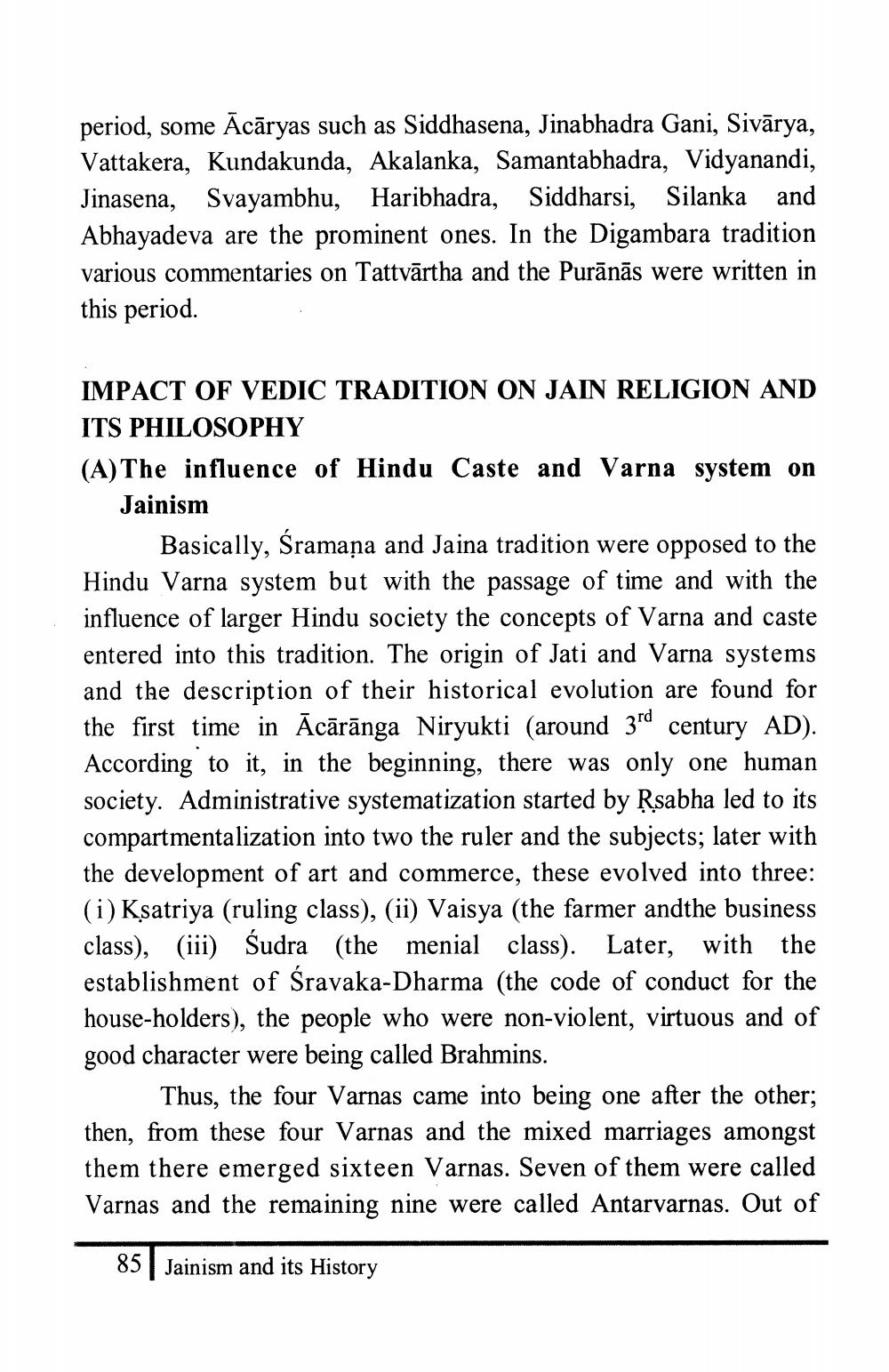________________
period, some Acāryas such as Siddhasena, Jinabhadra Gani, Sivārya, Vattakera, Kundakunda, Akalanka, Samantabhadra, Vidyanandi, Jinasena, Svayambhu, Haribhadra, Siddharsi, Silanka and Abhayadeva are the prominent ones. In the Digambara tradition various commentaries on Tattvärtha and the Purānās were written in this period.
IMPACT OF VEDIC TRADITION ON JAIN RELIGION AND ITS PHILOSOPHY
(A) The influence of Hindu Caste and Varna system on Jainism
Basically, Śramana and Jaina tradition were opposed to the Hindu Varna system but with the passage of time and with the influence of larger Hindu society the concepts of Varna and caste entered into this tradition. The origin of Jati and Varna systems and the description of their historical evolution are found for the first time in Ācārānga Niryukti (around 3rd century AD). According to it, in the beginning, there was only one human society. Administrative systematization started by Rsabha led to its compartmentalization into two the ruler and the subjects; later with the development of art and commerce, these evolved into three: (i) Ksatriya (ruling class), (ii) Vaisya (the farmer andthe business class), (iii) Śudra (the menial class). Later, with the establishment of Śravaka-Dharma (the code of conduct for the house-holders), the people who were non-violent, virtuous and of good character were being called Brahmins.
Thus, the four Varnas came into being one after the other; then, from these four Varnas and the mixed marriages amongst them there emerged sixteen Varnas. Seven of them were called Varnas and the remaining nine were called Antarvarnas. Out of
85 Jainism and its History




